Stop the Tomato Hornworm From Damaging Your Tomatoes
Updated: Jun. 28, 2024
They turn into beautiful moths, but tomato hornworm caterpillars are pests in the veggie garden.
On This Page
What Does a Tomato Hornworm Look Like?
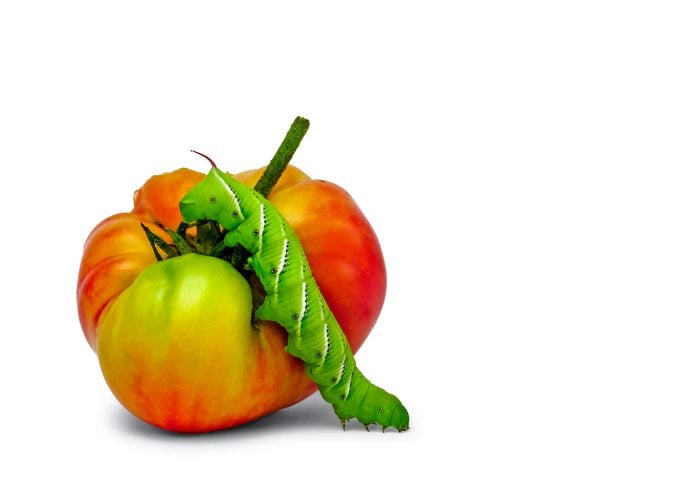
The first sight of a full-grown tomato hornworm is enough to make anyone recoil in horror. As thick as your thumb, with a spiky tail poking out behind, these caterpillars grow to four inches or larger. What’s more, they do it by eating the foliage of your treasured vegetable plants! Here’s how to control hornworms in a way that’s safe for humans and the environment.
Tomato Hornworm vs. Tobacco Hornworm
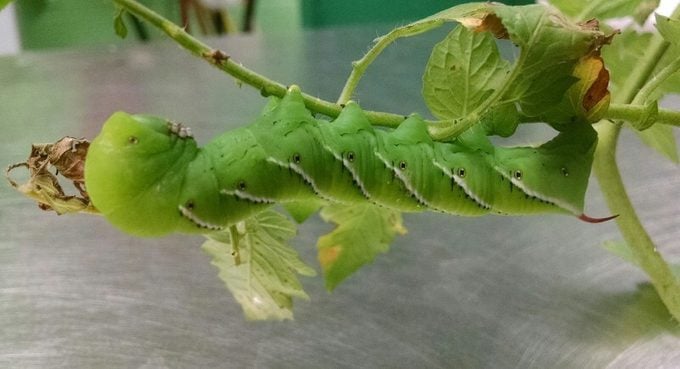
There are actually two closely-related species of hornworm that wreak havoc in the veggie garden. The tobacco hornworm (Manduca sexta) has black edges on its white stripes, and a red tail spike, as shown below.
The tomato hornworm (Manduca quinquemaculata) lacks those black edges, and the tail spike is often blue. The lack of black stripes is usually the easiest way to identify them.
Both caterpillars feed on host plants like tomato and tobacco (as their names suggest), as well as other members of the nightshade (Solanaceae) family, like peppers, eggplant and potato. Depending on your region, you might find one or both of these species in your garden.
These caterpillars are pretty easy to spot. If you see damage to leaves or fruit on your tomato, eggplant, or pepper plants, look around for caterpillars, which may vary in size but have the same general appearance. You might even spot them by their droppings (called frass), which can get pretty large—the size of chocolate chips and bigger!
Hornworm Life Cycle
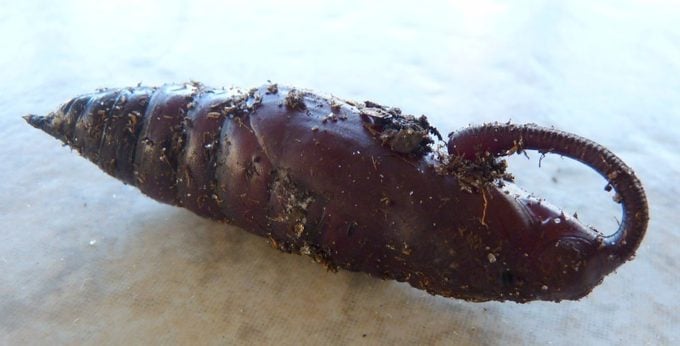
Hornworms start out as small yellow-green eggs laid individually on the leaves of their host plants. They hatch into very small caterpillars, but grow quickly as they devour the foliage. Full-grown hornworms can defoliate even large plants seemingly overnight.
After a few weeks, hornworms crawl down off the host plant into the soil, where they pupate. The pupa are brown with a loop at one end. That loop holds their developing adult mouth parts (proboscis). If it’s late in the year, hornworms may spend the entire winter in the soil, emerging in late spring or early summer.
Tomato Hornworm Moth
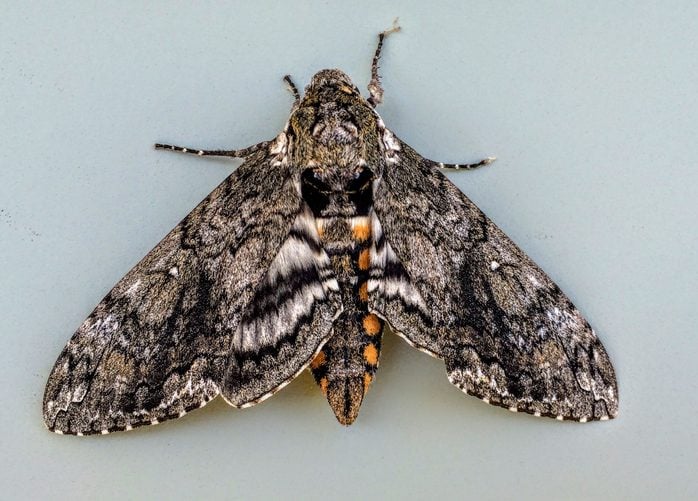
As you might guess from the caterpillar size, hornworms turn into very large moths, known as sphinx moths or hawkmoths. These are so large they’re sometimes confused with hummingbirds when they feed on flowers! The tomato hornworm becomes a five-spotted hawkmoth, while the tobacco hornworm turns into a Carolina sphinx moth. These moths fly mainly in the mornings and evenings. They mate, lay eggs and die in just a week or two.
Discover 10 interesting facts about hummingbird moths.
Controlling Tobacco and Tomato Hornworms
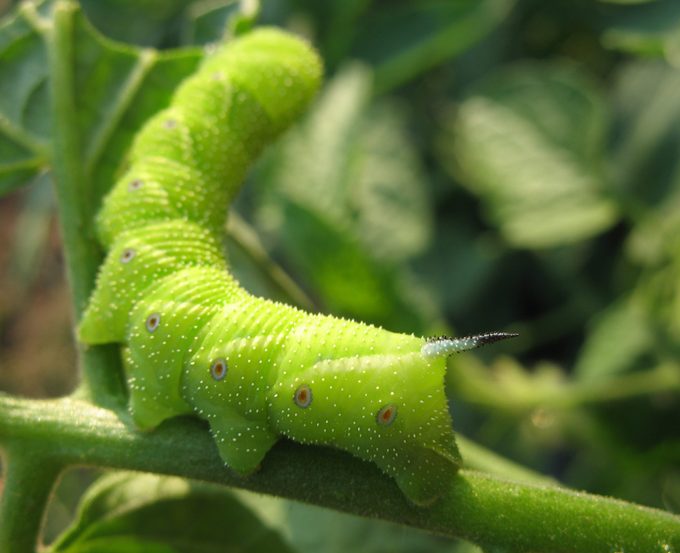
Despite their spiky tails, hornworms are harmless to humans. The easiest and safest way to control them is to remove them by hand, dropping them into a pail of soapy water. (The soap clogs up their spiracles so they’re unable to breathe, which kills them fairly quickly.) If you dislike the idea of killing them, consider having a “sacrificial” tomato plant or two in a different area that you can move them to instead.
Another way to control tomato hornworms is to encourage their predators to thrive in your garden. Insects like wasps, ladybugs, and lacewings feed on the eggs and smaller caterpillars.
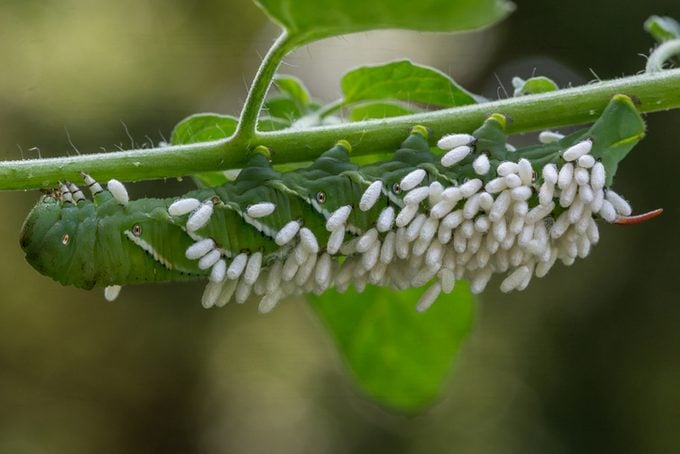
As a last resort, you can turn to chemical or bacterial pesticides like BT (Bacillus thuringiensis) or permethrin. Be aware that these can be dangerous to people too, and may kill all insects indescriminately, including beneficial insects and pollinators. If you do use these methods, follow the directions carefully and use only as and when absolutely needed.
Tobacco and tomato hornworms can cause damage, but they become big, beautiful moths. Unless they’re serious pests in your garden, consider letting them live to become the gorgeous night-fliers they’re destined to be.
Do Tomato Hornworms Damage Peppers?
“I’ve grown peppers and tomatoes in close proximity for years. For the first time ever, I found a tomato hornworm on my peppers. Is this common?” asks Birds & Blooms field editor Kathy Eppers of Aledo, Texas.
Gardening expert Melinda Myers says, “Tomato hornworms will attack all members of the Solanaceae family including tomatoes and peppers, as well as eggplants and potatoes. Growing related plants such as eggplants, tomatoes and peppers in the same garden bed makes it easier for insects and diseases to move from one susceptible plant to the next.
Rotating in some plantings from a different family of plants from one year to the next can help reduce the risk of insect pests and diseases in subsequent years. Follow plantings of tomatoes with something unrelated such as onions, and follow these with another unrelated vegetable such as beans.
If possible, avoid planting related plants in the same location for three years. Creating a healthy soil foundation amended with compost can also help grow healthy plants that are more tolerant of insect pests and diseases.”






















